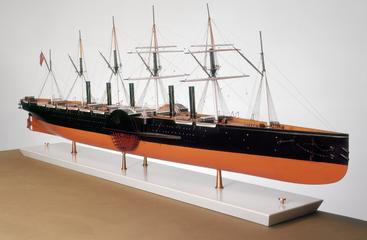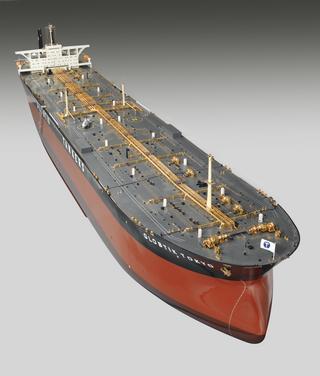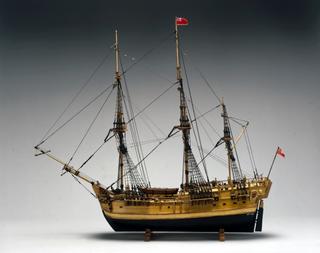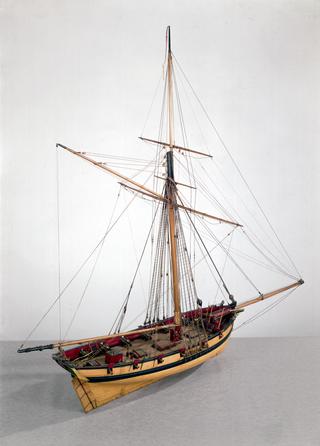
Model of a 'Ness Yole'
- Made:
- 1925-1932; 1962 in Kingston-upon-Thames
- maker:
- Barbara Mary Campbell






Model Scale 1:12, of a 'Ness Yole' (register No.149 LK), from Lerwick in the Shetlands, by John Shewan of Lerwick, Shetland, Scotland, 1925-1932. Early 20th century. The model shows, with great completeness, all the details of a 'Ness Yole' as used in the Shetland Islands for inshore fishing. With human figure by Barbara Mary Campbell, Kingston-upon-Thames, Greater London, England, 1962.
As the Shetland Islands formed part of Norwegian territory from the late 9th century until the middle of the 15th century it is not surprising that the fishing boats of Shetland were similar to those which were long in use in Norway. These craft of Viking origin were characterized by the sharpness of bow and stern which were of almost exactly similar shape, and their light clincher construction, with considerable sheer.
The Ness yole, used for inshore fishing, was particularly lightly built with only five pairs of ribs and these - in Viking fashion - were not bolted to the keel but were only connected with it by means of the garboard, or lowermost strake.
Until fairly modern times, owing to the absence of suitable timber in the Shetlands, the components for the Ness yole were imported from Norway already fashioned, so that the craft were readily completed merely by the process of assembly.
The Ness yole was also rigged in the same manner as its relation of the Norwegian coast, with one large lug-sail.
Details
- Category:
- Water Transport
- Object Number:
- 1932-115
- Materials:
- wood (unidentified), brass (copper, zinc alloy), cotton (textile), plaster and cotton (fibre)
- Measurements:
-
overall: 450 mm x 600 mm x 140 mm,
- type:
- sailing vessel
- credit:
- Johnston, Arthur




